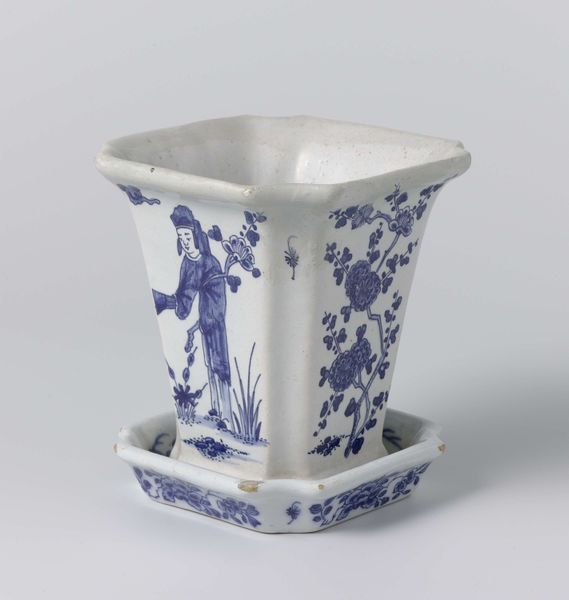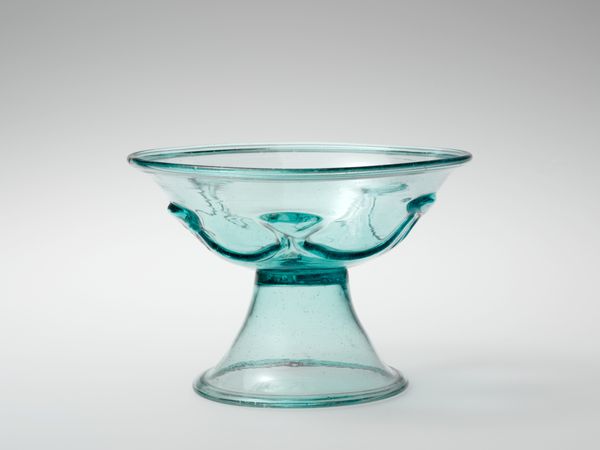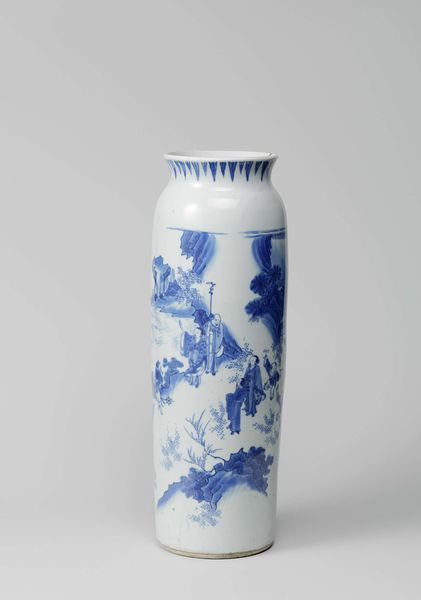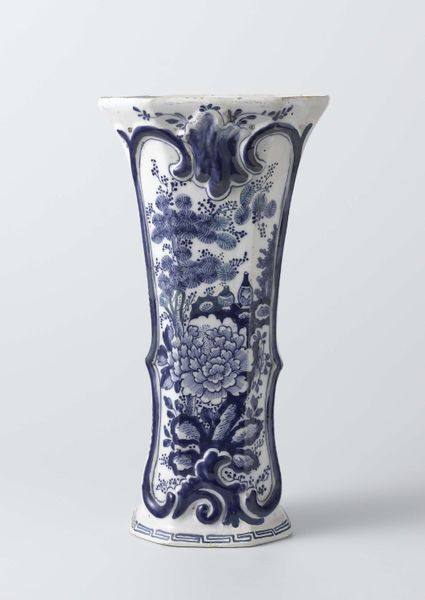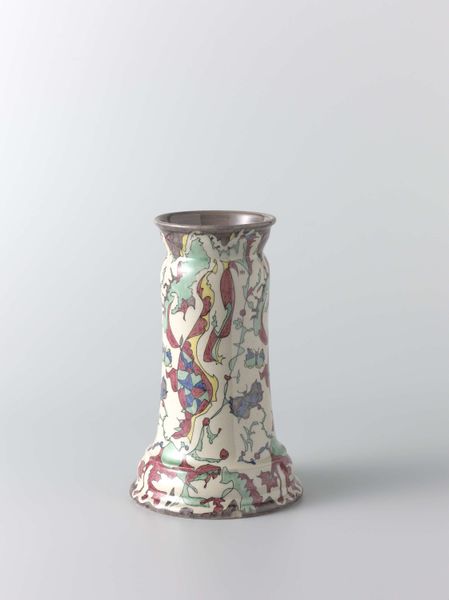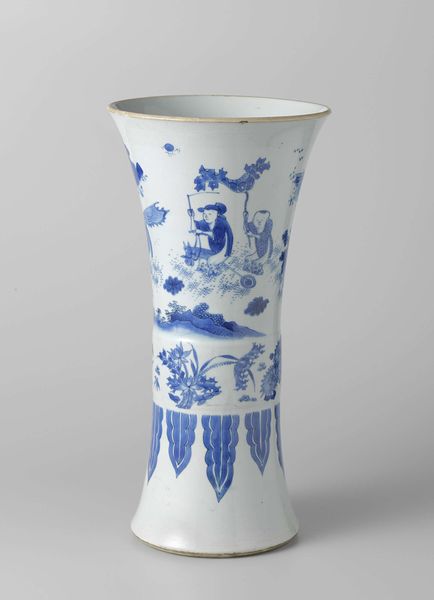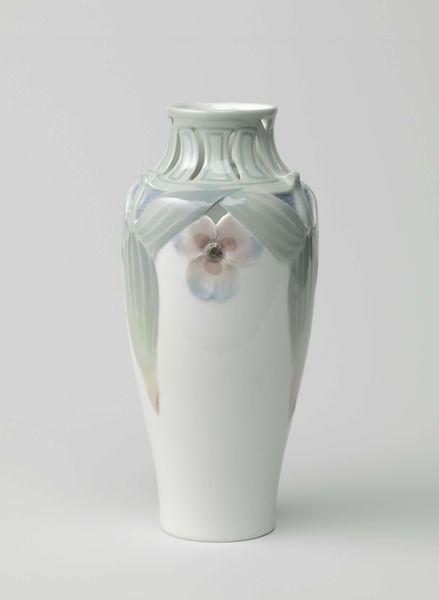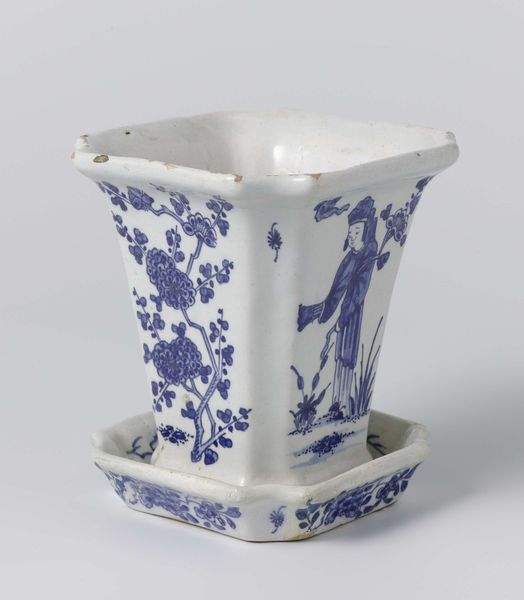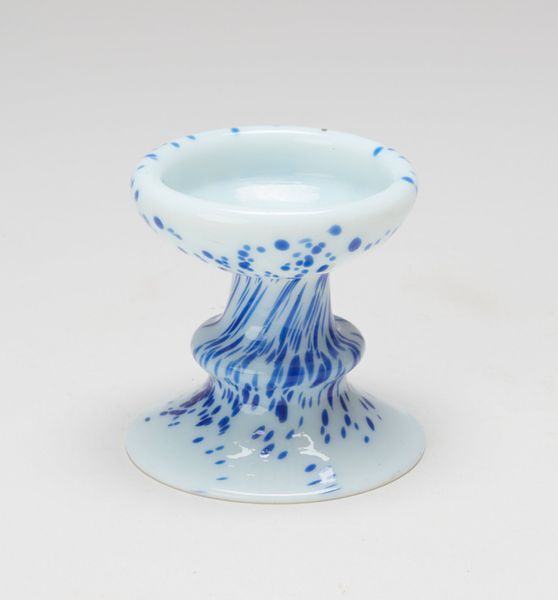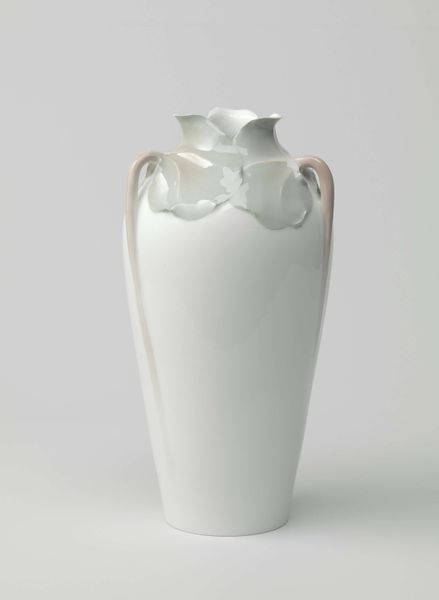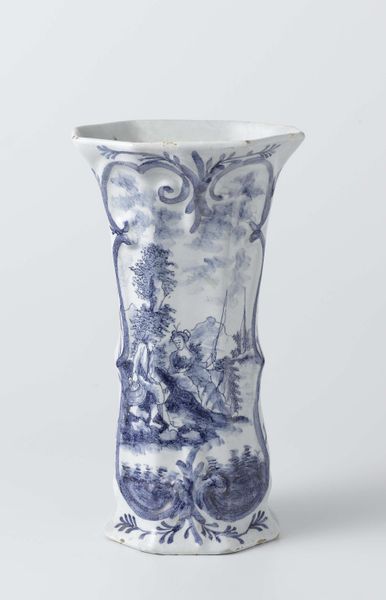
ceramic, sculpture
#
art-nouveau
#
ceramic
#
sculpture
#
decorative-art
Dimensions: height 33.2 cm, diameter 17.2 cm, diameter 20.1 cm
Copyright: Rijks Museum: Open Domain
Curator: The porcelain vase we're looking at today, titled "Vase with trees in relief," dates back to 1903 and was crafted at the Königliche Porzellan Manufaktur. Editor: It's strikingly serene, isn’t it? That muted blue, cascading down the top section like gently melting ice, offers such a tranquil sensibility. It's minimalist, but there’s also detail in the execution. Curator: The piece represents a key moment in decorative art, encapsulating the Art Nouveau movement. It speaks to a broader desire at the turn of the century to bring art into everyday life, to infuse domestic spaces with beauty, which was connected to larger cultural and social shifts. Consider also the gendered associations with craft, its complicated historical positioning relative to fine art. Editor: Right, and that intersection is important. This isn't simply decoration. It's an intentional statement through its form and the labor invested. We’re seeing a deliberate blurring of lines. The smooth, flawless ceramic body is interesting when you consider the precision firing involved in its production. It's not just aesthetically pleasing; it's a testament to technical mastery, an exploration of materiality. Curator: Precisely! The trees depicted in relief aren’t randomly selected; they are often interpreted as symbols of nature reclaiming urban space. The piece reflects on Germany’s early twentieth century romanticization of landscape while simultaneously displaying industrial excellence. How can one create unique organic textures using standardized factory means? Editor: I’m drawn to think of the artisan labor versus the industrial production, the artistic vision translated through various skilled hands. What socio-economic status would these artisans be afforded, and what might it mean to be making "art" versus merely making commodities at this moment? The vase encourages thinking about who it was intended for, their social standing and what role such decorative objects would fill in the constructed social order. Curator: Absolutely, questions of ownership and societal frameworks impact our analysis, encouraging us to move past pure aesthetics and ask why, how, and for whom these works were created. Editor: Well, thinking through the relationship between function and craft, labor and materiality always reshapes how I understand artworks. I’m going to think about this differently moving forward.
Comments
No comments
Be the first to comment and join the conversation on the ultimate creative platform.

